Imagine a future when going through a TSA screening is as simple as self-checkout at a store. This idea is already being tested in one western U.S. airport.



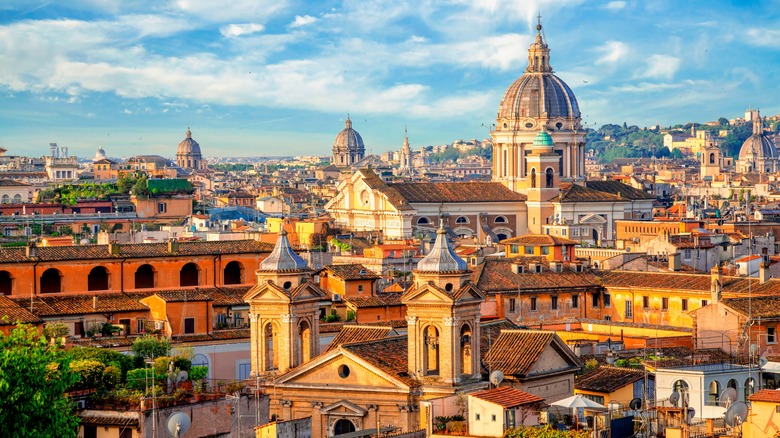

This European destination is one of my favorite places in the world, and once you visit, I think you’ll agree – I loved my time as a digital nomad in Croatia. Not only is it a beautiful place, but it’s a top spot for digital nomads. The world is full of hubs for remote workers nowadays, but for me, Croatia stands out head and shoulders above the rest for so many reasons.
Having spent many months in Croatia, I believe it’s somewhere everyone should live and work in at least once. I can honestly say that I never once got bored, I met so many wonderful people, and the food! Oh, don’t get me started on the food – it’s pretty incredible.
What I’m trying to say is that if you’re on the fence about whether or not you should head to Croatia for a few months, or even a year, go for it. You can choose from various towns and cities, move around as much as you like, and make memories on the go. It’s a win-win.
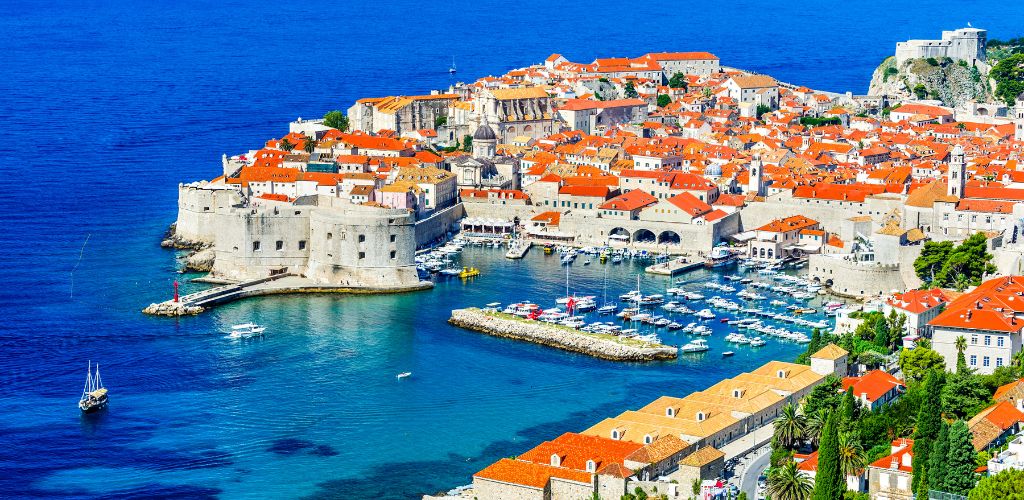
There are countless countries to choose from as a digital nomad these days, so why Croatia? I’ve put together my top ten reasons why I believe that Croatia is a digital nomad’s dream destination. By the end, I hope you’ll be pressing the ‘book’ button on your flight.
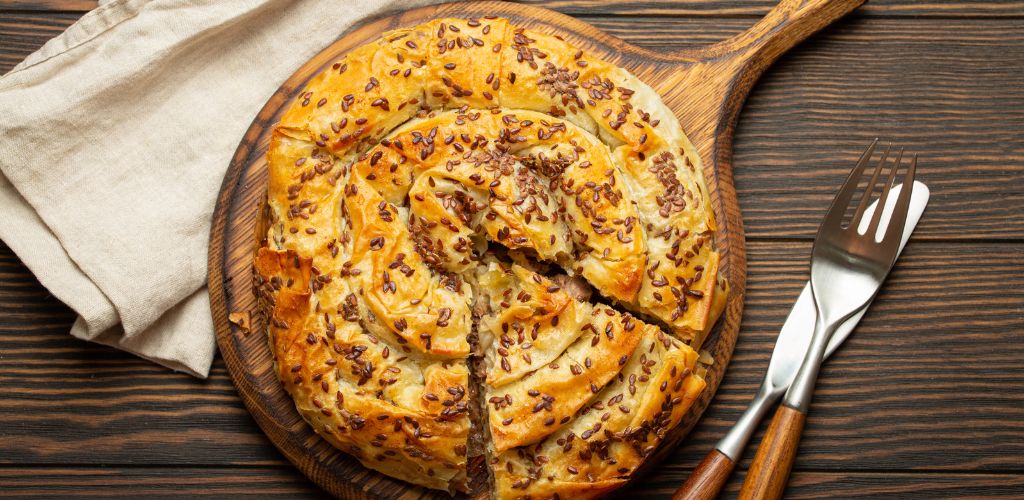
Food glorious food indeed! Croatian cuisine is extremely fresh, seasonal, and very hearty. Of course, you’ll find many international menus no matter where you go, but it’s always cheaper and more authentic to try local dishes wherever possible.
I’m not usually the biggest risotto fan, but I love black risotto in Croatia; it just hits differently somehow. Burek is also a must-try, as well as locally sourced truffles, gregada (a traditional fish stew), and pag cheese in particular. As far as drinks go, be brave and try rakia with friends—just be warned; it’s extremely strong!
Eating local food will save you plenty of money during your stay. Touristic resorts, especially in places like Dubrovnik, will set you back a large amount, but if you head to where the locals go, you’ll enjoy your food so much more and keep cash in your pocket in the process. You could also try learning how to cook Croatian fare and that will teach you a new skill and save you money at the same time.

As a digital nomad, the internet is extremely important. For the most part, you can’t work without it, so you need to know that you’re going to be able to connect easily and that you’ll have high-quality service available. During my time in Croatia, I never struggled with the internet once, even when I was traveling around.
According to Speedtest, Croatia’s average upload and download speeds are 29.23 Mbps and 71.65 Mbps respectively. In large towns, cities, and resorts, almost all bars, restaurants, hotels, and cafes have WiFi you can use. You can also use an eSIM, such as Airalo, or purchase a regular SIM card and use your data as a hotspot.
I used both cafes and coworking spaces around Croatia and conducted video calls and heavy internet work with ease. I never had a problem and managed to be super-productive in general. Even the more rural areas and islands didn’t pose major issues, so the internet shouldn’t be a concern for you.

Since Croatia introduced its digital nomad visa (more on that shortly), the country has become a real hub for remote workers. As such, you won’t struggle to meet other like-minded people from all over the world. Most coworking spaces and hotels also arrange social evenings, where you can make new friends, network, and socialize to your heart’s content.
I found the locals in Croatia to be extremely friendly and very welcoming. In large towns and cities, many people speak English well enough, and even if they don’t, Google Translate is your friend. It helps to learn a few words of the language if possible, but I felt like I was struggling to communicate.
The most popular digital nomad hotspots are Dubrovnik, Split, the capital city of Zagreb, Zadar, Hvar Town, and my personal favorite, Korčula. However, that doesn’t mean you can’t travel around and stay in other places if you find somewhere that calls out to you. I mentioned the high quality of the internet in the last point, and that extends generally across Croatia, so you really do have the freedom to go wherever you want.
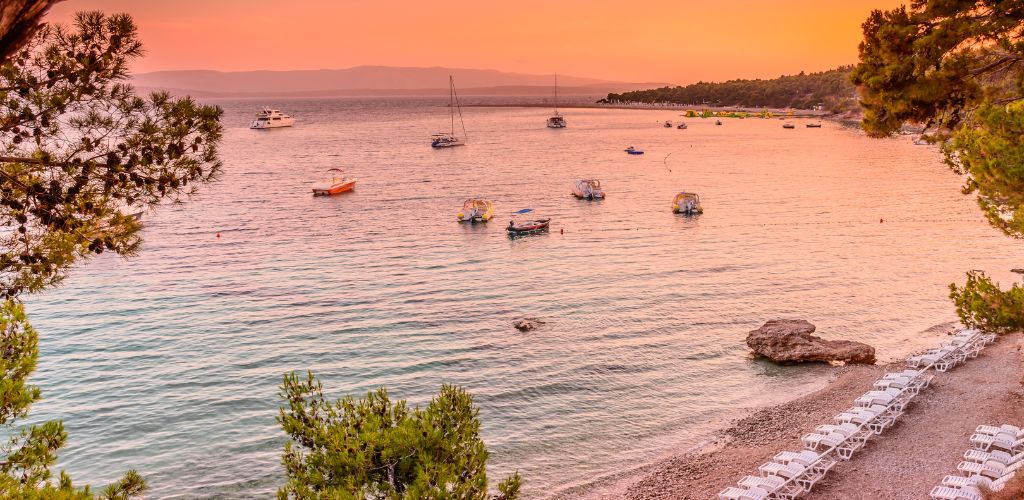
I love a good beach, and I found plenty during my time in Croatia. With 1777.3km/1104.4 miles of coastline, you’ve got a lot to choose from! Copacabana Beach in Dubrovnik is a great starting point, but don’t be afraid to travel to slightly off-the-beaten-track to find some stunning, secluded coves to relax.
Golden Horn on Brač Island is like something out of a beach dream, and Bacvice Beach in Split is somewhere I spent a lot of time. All of this makes it easy to chill out when you’ve finished work for the day or on a precious day off. There are also plenty of boat trips you can take which show you the coastline from a different viewpoint.
If you’re into beaches in particular, it’s a good idea to base yourself somewhere close to the coast, such as Zadar or Split. Dubrovnik is an amazing spot, but it’s extremely busy during the summer months, to the point where you can barely move. I’d personally choose to dip in and out of the city during the hottest months and visit during the shoulder seasons instead.
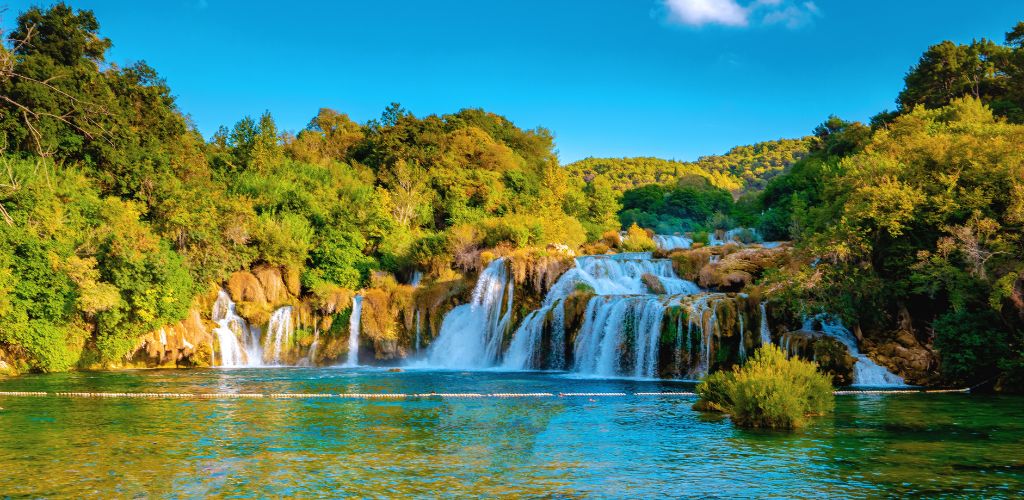
Croatia is packed with many things to see and do, and when you’re staying for an extended amount of time, you’re free to head out and explore. The good news is that it’s pretty easy to do so, with many organized trips, a great public transport network, and easy-to-follow roads. Even if you’re not super adventurous, you won’t find it difficult to get around.
Plitvice Lakes National Park is somewhere that really blew my mind, along with the beautiful Krka Waterfalls. These are two places that are pretty easy to reach if you have a day off and trust me when I say you’ll fill up your camera with amazing photographs. Of course, checking out the Dubrovnik city walls should also be on your to-do list.
In Split, you’ll find the amazing Diocletian’s Palace, and if you’re a Game of Thrones fan, you’ll find several of the filming locations dotted around Dubrovnik and Split. Additionally, there are many beautiful Croatian islands to check out, all of which have their own charm. Put simply, your days off will be packed with amazing sightseeing opportunities and boredom won’t be an issue.

While prices have increased over the last few years, as they have across the world, the cost of living in Croatia is still relatively low when you compare it to other major European cities. There are many ways you can look to cut costs here and there, and I found cooking at home or eating in traditional restaurants to be big money savers.
If you’re looking to rent an apartment, you’ll notice that prices are higher if you try to stay in the center of a city or close to the sea, but venturing a little further back will yield savings. For instance, the average price of a furnished apartment in Split is around €538/$577, with utilities on top. That’s cheaper than some other European cities, such as Barcelona, where you’re looking at prices around €850/$912.
Of course, if you try to live like you’re on vacation, you’ll notice that your money goes a lot faster. However, if you’re careful, and truly immerse yourself in regular, local life, your cash will last longer, and you’ll experience so much more as a result.
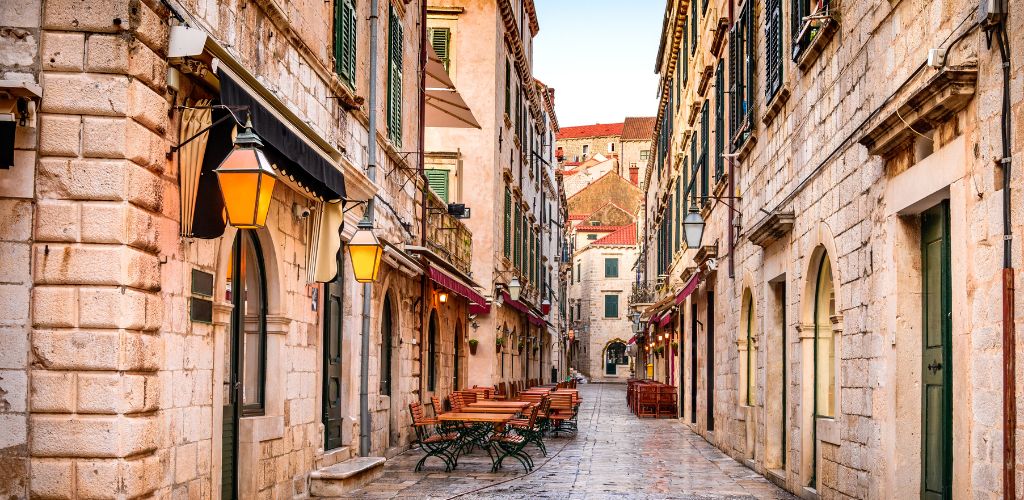
The great thing about Croatia is that you get the best of both worlds. You can throw yourself into the touristic fun that’s available in all major towns, cities, and resorts in the summer months, or you can go down the authentic, local route, and experience the culture. It’s easy to experience both sides of the place depending on your preferences.
Croatian culture is rich and varied, and as I mentioned earlier, the locals are super friendly. It’s fun to learn about the regional differences between areas, and if you venture over to the islands, you’ll find an entirely different way of life. From one place to another, every region has its own special quirks that are truly fun to explore.
For me, experiencing the culture of a new location is what makes travel so enriching, and I never found it hard to live an authentic life in Croatia. In fact, I’d say it’s one of the easiest places to experience the traditions and customs the country is famous for. It’s a big reason for me wanting to return!
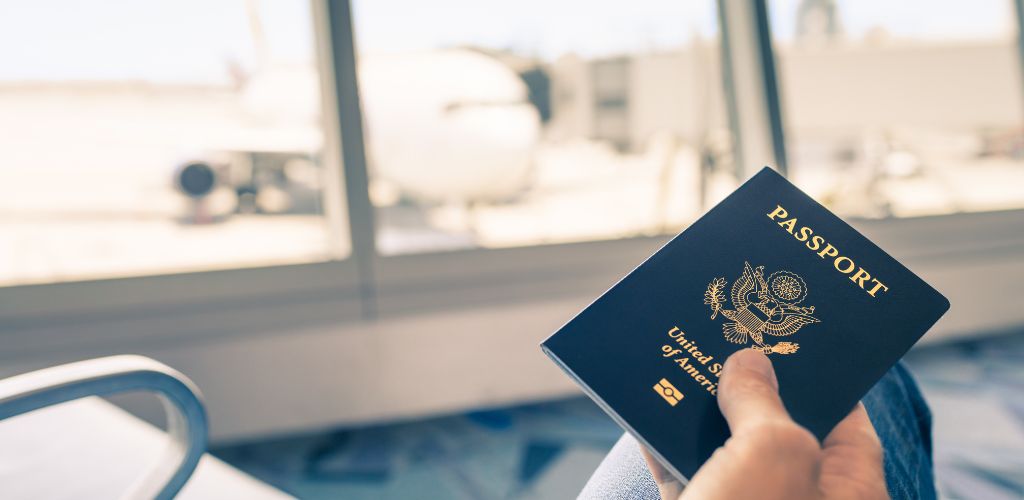
In January 2021, Croatia introduced its dedicated digital nomad visa, which opened the doors in more ways than one for remote workers to spend more time in this beautiful country.
The good news is that this visa is relatively easy to apply for as long as you have all the necessary documentation. In short, it allows freelancers and remote business owners from foreign countries to stay for up to one year, as long as their business is registered outside of Croatia.
It’s also possible to bring your spouse and/or children over with you as part of the family reunification process. The visa lasts for a year and cannot be renewed after that time, however, you can wait for six months and then reapply again. During this time, you don’t have to constantly stay at your registered address; you can travel around the country and only have to update your address if you don’t intend to return to your original location.
You can check all necessary documentation here, and you can apply once you arrive in Croatia or before you intend to travel. If you apply beforehand, I’d recommend applying online a couple of months beforehand, so you have time to receive your visa without any stress.
SEE ALSO: Croatia Digital Nomad Visa: How to Apply & Requirements

One thing about working remotely in Croatia stood out for me, and that’s the sheer number of places to work from. If you’re not a fan of sitting in your apartment and working, you’ll find many coworking spaces and laptop-friendly cafes dotted around. I worked from both, and I have to say that cafes are my favorite; there’s something fun about getting your work done, soaking up the atmosphere, and getting your caffeine fix at the same time.
Split and Zagreb have the largest number of coworking spots overall, but you’ll find them in all major towns, cities, and resorts. Croatia also has a very active cafe scene, so you won’t struggle to find a comfortable coffee shop to stay for a few hours, as long as you purchase food and drinks proportionate to the amount of time you spend there.
Many coworking spaces also organize social evenings, and they’re great places to network too. I found most coworking spaces in Croatia to be pretty laid-back and creative, and not at all ‘stuffy’ or too office-like. You’ll need to pay to work from a coworking spot but you’ll also get plenty of additional extras, such as free refreshments, a shared kitchen, comfortable chairs, and more.
SEE ALSO: 10 Best Coffee Shops & Cafes in Split (Laptop Friendly!)

The digital nomad visa in Croatia doesn’t impose any dual taxation rules, which means you don’t need to pay taxes in the country while you’re living and working there on this visa. Of course, you need to carry on paying tax wherever you’re originally registered to avoid any problems at the end of the tax year.
This isn’t the case for all visas in major digital nomad hotspots so it’s a great perk of choosing Croatia in general. I found the digital nomad visa to be very easy to apply for and I didn’t experience any problems with it during my stay. What’s more, if you receive your income in dollars (in particular), you’ll find that you get a lot more for your money, and the fact you don’t need to pay tax in Croatia helps even more.
There’s no denying that Croatia is a super beautiful country and it’s packed with many things to see and do. For me, as far as choosing a place to stay and work from goes, it ticks all the boxes. Croatia really does feel like home once you arrive; the locals are keen to embrace you as part of their community, and as long as you commit to immersing yourself in the culture, you’ll learn and gain so much during your stay.
With the new digital nomad visa in place, Croatia has everything you could possibly need as a remote worker. Of course, nowhere in the world is perfect, but I didn’t encounter any major issues at all during my time there. The biggest issue for me was trying to decide what to do on my days off, as there was too much to choose from!
The post 10 Reasons Why Croatia is a Digital Nomad’s Dream Destination appeared first on Goats On The Road.
A pair of original millstones stand by the entrance to this luxurious cottage that sits inland from the North...
The post Review: Porthcothan Mill Cottage, Near Padstow, Cornwall, UK appeared first on A Luxury Travel Blog.
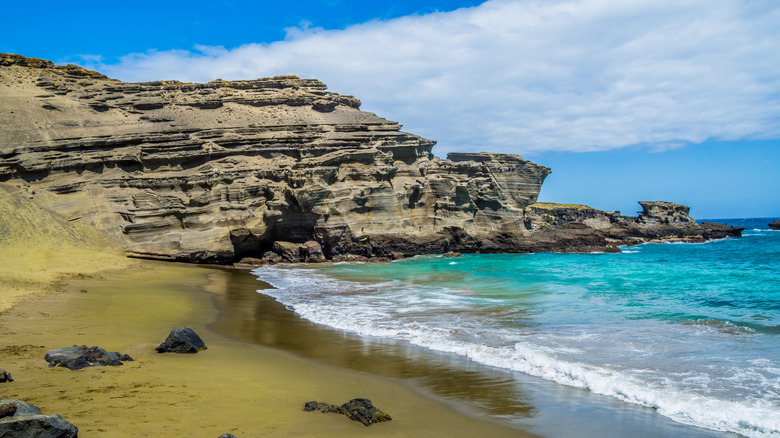


Out of Town Blog
Mangan Taku: A celebration of Cordillera cuisine and culture
To celebrate the rich cuisine and culture of the country’s highland provinces, the Department of Tourism – Cordillera Administrative Region in partnership with the City Government of Baguio recently ran the fifth edition of the Mangan Taku Cordillera Food and Wine Fair.

Held at the Burnham Park’s Rose Garden, the six-day fair showcased 32 exhibitors of diverse food and beverage items, restaurants, hotels, culinary schools, and partner agencies and local governments.
A daily feature is the Provincial Hour which had live cooking demonstrations on select indigenous dishes of Abra, Apayao, Benguet, Ifugao, Kalinga, and Mountain Province. Adding to the excitement were Cookfest contests and Cordillera Wine Mixology competitions which pit home-grown cooks, culinary students and baristas.

According to DOT-CAR regional director Jovita Ganongan, Mangan Taku is a culinary journey which celebrates the time-honored culinary traditions of the Cordilleras that must be appreciated, preserved, and promoted. She added that the event is also in line with the World Food Travel Association’s thrust of promoting food tourism to get a sense of place.
Mangan Taku, which literally means “let’s eat”, is a regional version of the DOT’s national food tourism program which highlights the diversity and uniqueness of heirloom dishes in the grassroots.
The fair also included the Indigenous Food Forum which served as a platform to delve deeper into indigenous and heritage food.

Featured guest speakers were food scholar Guillermo Ramos, Chef Waya Araos-Wijangco of Gypsy Baguio who talked on sustainable food production and mindful consumption, Slow Food International Southeast Asia and Pacific Regional coordinator Elena Aniere, Rowena Gonnay of the Slow Food Community of Pasil, Kalinga who shared on the town’s heirloom Rice, and Chef Chavi “Baguio Mountain Man” Romawac who discussed the revival of indigenous food and entrepreneurship.

In photo at the closing and awarding ceremonies are Baguio City mayor Mayor Benjamin Magalong, DOT-CAR regional director Jovita Ganongan, and culinary heritage advocate Ige Ramos, with winners of the Mangan Taku Cookfest and the Cordillera Wine Mixology contests.
Follow and Subscribe to OutofTownBlog.com on Facebook, Twitter, Instagram, Pinterest, and YouTube for more food and travel tips.
Read: UNESCO Names Baguio City As The First Creative City in the Philippines
Mangan Taku: A celebration of Cordillera cuisine and culture
Melo Villareal
Out of Town Blog
Out of Town Blog
Inaul Weaving in the town of Sultan Kudarat, Maguindanao
Inaul weaving is a traditional art form that has been passed down through generations in Sultan Kudarat, Maguindanao. The art is deeply rooted in the Maguindanao culture and involves the creation of textiles with intricate designs using a variety of colored threads. This practice is not only a vital part of the region’s heritage but also serves as the primary source of income for many communities in Maguindanao, particularly the Iranon women of Sultan Kudarat.

The Inaul cloth, which means “woven” in Maguindanaoan language, comes in numerous vibrant patterns and designs. Primarily used to create malong or wraparound skirts worn by both men and women, this unique textile has also found its way into modern high fashion. Inaul weaving not only represents the community’s cultural identity but also showcases the incredible skills and artistic talents of its master weavers, many of whom have been practicing this craft for decades.
Organizations like the Sultan Kudarat United Inaul Weaving Association (SKUIWA) are dedicated to preserving this living tradition. By supporting the local weavers and providing them with opportunities to showcase their work, these associations are paving the way for Inaul weaving to remain not just a beautiful cultural expression but also a sustainable source of income for the residents of Sultan Kudarat, Maguindanao.
Inaul weaving is a time-honored tradition of the Maguindanao people, usually made into malong or wraparound skirts commonly and regularly used by both sexes. The Maranaos of Marawi City also share this weaving tradition. The earliest Inaul weavers are believed to have come to Maguindanao with Shariff Mohammed Kabungsuwan, who introduced Islam to the area, now known as Sultan Kudarat municipality.

The skill and artistry involved in Inaul weaving are deeply interwoven with the cultural identity of the Maguindanao people. Historically, the Inaul fabric has been associated with royalty and nobility, as its intricate designs and patterns signify the social status of the wearer. Designs can vary from geometric patterns to elaborate representations of flora and fauna.
The inaul is often used in various occasions and events, such as weddings, festivals, and even diplomatic gatherings. This traditional fabric has also made its way into the high fashion industry, with designers incorporating the rich designs of the Inaul into modern garments.
The tradition of Inaul weaving has been passed down from generation to generation. Weavers typically learn the craft from their mothers, who in turn learned from their own mothers. This ensures the preservation of traditional techniques and patterns while allowing for the introduction of new designs and innovations.
Inaul weaving continues to thrive in the hands of skilled weavers, such as those residing in weaving villages like Bulalo in Sultan Kudarat, Maguindanao, where families of weavers have been keeping the tradition alive for many years. Despite challenges such as natural calamities and modernization, the Inaul weaving tradition still stands as a testament to the resiliency and creativity of the Maguindanao people.
Inaul weaving involves the use of a loom and various threads, such as silk, cotton, and rayon. In this section, we’ll explore the steps involved in Inaul weaving, including preparing the loom, selecting threads and colors, and the weaving techniques used.

The first step in Inaul weaving is preparing the loom. A loom is a wooden frame used to hold the warp threads in place while the weft threads are woven through them. The size and type of loom used may vary based on the intended final product – such as a traditional malong or wraparound skirt. Master weavers ensure the loom is set up correctly and the warp threads are evenly spaced and taut.
Selecting the appropriate threads and colors is crucial for creating a beautiful Inaul cloth. Weavers commonly use silk, cotton, and rayon threads for their vibrant colors and excellent durability. The colors chosen often carry symbolic meaning, with traditional Inaul designs emphasizing specific patterns and color combinations. For example, the colors red, yellow, and green might represent bravery, royalty, and peace, respectively.
Inaul weavers apply their expertise to create intricate patterns and designs in the fabric. They use various weaving techniques, such as the basic plain weave, twill weave, and satin weave. The weaver’s skill determines the complexity and quality of the final product. In some cases, weavers may even collaborate to create a single piece, with each person contributing their unique skills and expertise.
Throughout the weaving process, weavers maintain a careful balance between thread tension and pattern accuracy. This ensures that the final Inaul cloth showcases both the rich cultural heritage of Maguindanao people and the weaver’s mastery of the art form.

Inaul weaving is an important tradition in Maguindanao, Mindanao, and represents the unique culture and heritage of the region. This traditional woven cloth carries a strong sense of identity for the Maguindanaoan people. As a symbol of unity, Inaul is worn by both men and women and is passed down through generations, preserving the distinctive patterns and vibrant colors that showcase the region’s rich cultural history.
The Inaul is not only used as everyday clothing, but it also has significant roles in rituals and festivals. During the annual Inaul Festival, the traditional weaving art of Maguindanao is celebrated and showcased through various activities such as fashion shows, cultural performances, and exhibits. The festival highlights the craftsmanship and dedication of the local weavers, ensuring the continuation of this valuable tradition.
In the Maguindanaoan society, Inaul weaving plays a critical role in connecting families and communities. Weaving is a common livelihood among women, passed on from generation to generation, strengthening bonds and reinforcing the region’s shared history. In some areas like Sultan Kudarat, Inaul weaving even serves as a source of income and financial independence for families.
Inaul, with its myriad of intricate designs and eye-catching colors, also reflects the social standing of its wearer, with certain patterns and color combinations reserved for royalty and other high-ranking individuals. This further emphasizes the importance of Inaul in the Maguindanaoan society and the pride attributed to this unique cultural symbol.
Inaul, the traditional weaving technique of the Maguindanao people, features various intricate designs and patterns. The skilled weavers of Sultan Kudarat use their imagination and creativity to craft unique and meaningful motifs. One notable pattern found in Inaul is the ukkil, which signifies the flowing waters near the weavers’ community. The bungang araw or sunflower design symbolizes the sun, while the rambutan or hair-like designs represent the flora found in the region.
The Binaludan is an exquisite and expensive piece of Inaul craftsmanship, showcasing the intricate skills of Maguindanaoan master weavers. These talented artisans combine tie-dyeing and hand-weaving techniques to create mesmerizing patterns, with the binaludan known for its intricate wavelike designs. To ensure the vibrant colors pop, threads are dyed, wrapped in banana leaves, and sun-dried before being woven into the fabric. The binaludan is reminiscent of the ikat weaving traditionally practiced by T’bolis, Blaans, and other indigenous groups in Mindanao. To care for a binaludan malong, you should wash it solely with coconut water in the stained areas to preserve the dyes.
Color plays a significant role in the artistry of Inaul designs. Four colors are primarily used in the weavings – red, green, black, and white. Each color has its own symbolic meaning:
The combination of these colors in various patterns creates visually striking and symbolic Inaul designs that reflect the rich culture and artistry of the Maguindanao people.
Traditionally made into malong or wraparound skirts, Inaul weavings have adapted to modern times and now extend to a wide range of lifestyle items, such as bags, scarves, and even high-fashion clothing. Contemporary weavers of Maguindanao integrate new patterns and motifs into their work, making Inaul a living tradition that continues to evolve and flourish.
By preserving the age-old techniques and infusing modern aesthetics into their craft, the artisans of Inaul weaving in Sultan Kudarat successfully showcase the timelessness of their culture and the beauty of their handwoven designs.
In recent years, Inaul weaving from Sultan Kudarat, Maguindanao has become more than just a traditional craft. With its growing popularity, Inaul has found its way into modern fashion.


Fashion designers have recognized the beauty and significance of Inaul fabric and have started to incorporate it into their works. By blending the traditional art form with modern aesthetics, designers have created stylish gowns, bags, scarves, and shawls that showcase the intricate patterns and vibrant colors of Inaul. The fabric’s versatility has captivated the fashion industry, bringing newfound appreciation for the weavers and their craft.

Traditionally, Inaul fabric was used for making Malong, a wraparound skirt commonly worn by both men and women in Maguindanao. However, its adaptation into contemporary fashion has expanded its use to other garments and accessories.
As Inaul is now being used for various items such as:
The incorporation of Inaul weaving in contemporary fashion has not only brought attention to the art but also contributed to the preservation of this valuable cultural heritage. By adapting traditional techniques to modern tastes, Inaul weaving continues to thrive, finding relevance and recognition beyond its roots in Sultan Kudarat, Maguindanao.

Inaul weaving is a time-honored tradition of the Maguindanao people and holds tremendous cultural significance. This living weaving tradition is passed down from generation to generation and reflects the rich history, artistry, and social values of Maguindanao’s heritage. The intricately woven fabric is often used in ceremonial dress and symbolizes the wearer’s status and identity.
The process of creating Inaul fabric involves hand-weaving threads to form patterns and designs on a traditional loom. The use of various materials, like silk, cotton, and polyester, gives the fabric a distinct texture and appearance. Its distinctive characteristics include vibrant colors, intricately woven patterns, and the artistic combination of warp and weft threads to create visually rich designs.
Sultan Kudarat is home to many talented Inaul weavers, who form the Sultan Kudarat United Inaul Weaving Association (SKUIWA). These weavers have been practicing their craft for decades, preserving and promoting the art of Inaul weaving. By teaching the younger generation, they ensure the continuation of this vital cultural heritage.
Inaul designs often feature geometric patterns, floral motifs, and other symbols representative of Maguindanaoan culture. Each pattern has a particular meaning, often reflecting social status, identity, and cultural values. Some designs signify nobility and royalty, while others represent nature, harmony, and the strength of the community. The use of specific colors also has cultural significance, with red traditionally symbolizing bravery and yellow representing royalty.
To create an Inaul border design, skilled weavers utilize a traditional backstrap loom, working with a variety of threads and materials, such as silk, cotton, and polyester. By carefully manipulating the warp and weft threads, they create intricate patterns and designs. The borders often feature geometric shapes, floral designs, or culturally significant motifs, adding visual interest and symbolic meaning to the overall composition.
Inaul fabric is used today in contemporary fashion and ceremonial dress in various ways, such as incorporating the traditional woven cloth into modern clothing designs, accessories, and home furnishings. Wearing an Inaul garment during ceremonial events or special occasions showcases the wearer’s pride in their Maguindanaoan heritage and appreciation for the work of skilled artisans.
Want more updates about new package tours and tourist spots in Maguindanao? Follow #TeamOutofTown, on Facebook, Twitter, Instagram, Pinterest and Youtube for more Mindanao Tourist Spots.
Also Read:
Inaul Weaving in the town of Sultan Kudarat, Maguindanao
Melo Villareal
Out of Town Blog